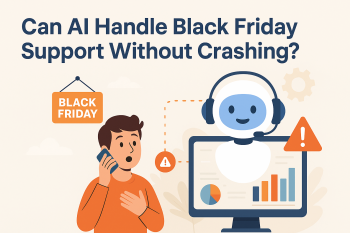The biggest challenge for online retailers today is to reduce shopping cart abandonment, which steadily increases revenue. According to research studies, an average of 70.19% of customers abandon their shopping carts. However, those who operate e-stores must study both shopping cart abandonment factors and solutions because this impacts revenue significantly.
This blog, brought to you by Provis Technologies, the best company for Website Maintenance, SaaS, and Development, discusses shopping cart abandonment, its causes, and optimal methods to reduce cart abandonment in eCommerce in 2025.
What is Shopping Cart Abandonment?
Shopping cart abandonment occurs when a potential customer adds products to their cart but leaves the website without completing the purchase. It is measured as the cart abandonment rate, calculated using the following formula:
For example, if 1,000 people placed products in their carts yet just 300 checked out successfully, the abandonment rate equals 70%. Similarly, customers tend to put their purchases on hold because the shopping process lacks something essential to finish their orders.
Why is Cart Abandonment a Major Concern?
Cart abandonment leads to monetary losses and misallocation of marketing resources. The heavy investments companies make in attracting potential customers through advertising, social media, and SEO activities become wasted. This is because customers who fail to convert cause higher customer acquisition expenses, which yield minimal return.
When customers abandon their shopping carts, potential opportunities to build customer connections are reduced. The improvement of both customer satisfaction and conversion rates becomes possible when you reduce shopping cart abandonment by identifying and resolving cart abandonment issues.
Common Reasons for Shopping Cart Abandonment
Businesses need to know the reasons why users abandon online shopping carts.
- A significant portion of customers will leave their carts when unexpected delivery fees and taxes with handling costs appear during the late checkout stage. Therefore, letting customers view the complete cost estimation before starting checkout prevents this situation.
- Long or complicated checkout forms, multiple steps, and technical delivery problems lead customers to abandon their purchase attempts. The completion rate increases when you shorten checkout processes to lower cart abandonment and let customers finish purchases without registering.
- Website security indicators are essential to reduce shopping cart abandonment and earn customer trust. This is because the absence of security makes them hesitate to share payment and personal information. Making your website appear and function securely remains a crucial requirement for a better way to stop cart abandonment.
- Users often look for swift checkout without needing to create an account, so they choose mandatory account creation as a barrier to purchase. Guest checkout features result in increased purchase conversion rates.
- Users get dissatisfied if their website performs slowly, which causes them to give up their purchase before they complete checkout. Fast page load and smooth payment steps decrease cart abandonments from customers.
- Users abandon checkout when they need digital wallet options that include PayPal, Apple Pay, or Google Pay and Buy Now Pay Later (BNPL) services. Customers should be provided with numerous payment solutions that enable them to pay using their most convenient method. It is one of the crucial steps to reduce shopping cart abandonment.
How to Reduce Shopping Cart Abandonment in 2025
Be Transparent About Costs
Transparency regarding all the costs represents a compelling strategy to prevent customers from leaving their carts empty. Moreover, customers avoid feeling deceived by businesses that show fees for shipping, taxes, and additional costs before the buying process starts.
Companies resolve this problem by providing shipping at no expense and offering cost estimate tools through their checkout process.
Simplify the Checkout Process
The checkout process, when simplified, leads to enhanced conversion rates. Processing becomes more efficient when customers experience fewer steps in addition to fewer fields and automatic form completion options.
Research indicates that providing one-click checkout to customers can raise conversion rates by 20%.
Improve Website Trust and Security
A high level of customer trust during shopping experiences helps reduce shopping cart abandonment. Strategies to improve trust include:
- Internet security badges, including SSL certificates and payment protection logos, should be displayed.
- Including customer reviews and testimonials
- A company must provide detailed explanations about its refund procedures and return policy.
Optimize Website Speed and Performance
Potential buyers get redirected from websites that take too much time to load. As a result, it leads to their departure. The crucial element for site performance requires your website to load under two seconds.
Mobile readiness stands as an essential demand because many people make online purchases through their mobile phones. Therefore, regular checkout process tests for broken links and errors will reduce shopping cart abandonment.
Offer Multiple Payment Options
Multiple payment solutions available to customers enable them to make successful transactions.
Your conversion rate will improve through the inclusion of PayPal, Google Pay, Apple Pay digital wallets, and Buy Now Pay Later (BNPL) functionality because these payment options serve diverse customer requirements.
Leverage Exit-Intent Popups and Retargeting
Website abandonment opportunities arise when customers utilize exit-intent popups to handle departing users before they exit. A restricted offer or zero delivery fee holds sway over shoppers to return and complete their transaction before leaving the website.
Social media retargeting ads combined with marketing emails help potential buyers recall their unfinished cart transactions, which drives them toward completion.
Enable Live Chat Support
Real-time support at checkout prevents customers from leaving the process. The instant support from live chat or AI-powered chatbots helps customers find solutions regarding payment problems and technical glitches, as well as solve product inquiries.
A clear path to customer chat service improves both customer satisfaction and leads to increased conversions for most businesses.
Additional Strategies for Reducing Shopping Cart Abandonment
Manufacturers have two opportunities enabled by AI alongside personalization methods to minimize cart abandonment:
- When customers receive AI-generated recommendation alerts about previous engagement, they demonstrate favorable interest in such products, which helps them proceed with the buying process.
- The display of actual purchase notifications from recent buyers generates social proof that generates purchasing urgency. As a result, it brings more shoppers to complete their transactions.
- Customers who have access to exclusive discounts through subscription and loyalty programs will increase brand loyalty because it builds lasting customer relationships. At the same time, it minimizes abandonment rates when they return.
The Bottom Line
The challenge to reduce cart abandonment rate produces substantial losses. However, appropriate marketing techniques offer solutions to reduce shopping cart abandonment. The three main strategies that drive better conversion rates include checkout process improvement, enhanced transparency measures, and stronger customer trust initiatives.
Businesses aiming to reduce cart abandonment statistics in the year 2025 must focus on straightforward checkout procedures. At the same time, they should provide numerous payment options and put their retargeting plan into practice while maintaining site protection security protocols. Dealing with these factors produces lower revenue loss and enhances customer satisfaction, which creates sustained customer retention and brand loyalty.
Written By
Author's Picks
Categories
- AI for Startups
- AI in Web Development
- AI Integration
- AI Platforms
- AI Prompt
- AI Tools
- AI Trading Software
- Android App
- Android vs iOS Development
- Angular
- API
- API Development
- App
- app development
- App Idea
- App User Feedback
- Application
- Artificial Intelligence
- Audit Services
- Automotive Industry
- Awards and Recognition
- Business Consulting
- Business Website
- Chatbots
- CRM
- CRM for Financial Advisors
- Custom CRM
- Custom SaaS
- Custom Website
- Customer Service
- dashboard design
- Developing a Mobile App
- Digital Business
- E-commerce
- EMR Integration
- Finance
- Financial Advisors
- Financial Advisors
- GIT
- Health Insurance
- iOS App
- iOS App Development
- IoT Mobile App Development
- IoT Platforms
- IT Audit Services
- IT Consulting
- IT Strategies
- Java Development
- Laravel
- Lean Canvas
- Learning Management System
- Logistics Apps
- Mobile App Development
- MVP
- Native App
- News Aggregator Site
- OTT
- Outsourcing IT
- Payment Gateway
- predictive analysis
- Product Launch Strategy
- Progressive Web App (PWA)
- Prototype
- Recommender Systems
- Ruby
- SaaS
- SaaS Application
- SaaS Business
- SaaS Company
- SaaS Development
- SaaS Product
- SaaS Project
- Sales Funnel
- SEO
- Shopping Cart
- Software Development
- SSL and TLS
- Startup Checklist
- Technology
- Tetradic Color Scheme
- UI/UX Design Company
- Unit Testing
- User Flow
- User Testing
- Web Development
- Web Performance Optimization
- website Maintenance Services
- Website Migration Service
- Website Speed Optimization
- WooCommerce
- WordPress





